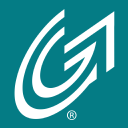/ factorpad.com / stocks / f61jmf.html
An ad-free and cookie-free website.
Our quantitative data points are meant to provide a high-level understanding of factors in equity risk models for Glatfelter. Portfolio managers use these models to forecast risk, optimize portfolios and review performance.
We show how GLT stock compares to 2,000+ US-based stocks, and to peers in the Manufacturing sector and Pulp Mills industry.
Please do not consider this data as investment advice. Data is downloaded from sources we deem reliable, but errors may occur.
 Glatfelter is a leading global supplier of engineered materials. Its ongoing portfolio transformation is creating a more stable, growth-oriented business, coupled with a leaner cost structure and a new operating model.
Headquartered in Charlotte, North Carolina, Glatfelter’s annual revenues are approximately $928 million. Our 2,500 employees serve customers in more than 100 countries.
Glatfelter is a leading global supplier of engineered materials. Its ongoing portfolio transformation is creating a more stable, growth-oriented business, coupled with a leaner cost structure and a new operating model.
Headquartered in Charlotte, North Carolina, Glatfelter’s annual revenues are approximately $928 million. Our 2,500 employees serve customers in more than 100 countries.
Many of the following risk metrics are standardized and transformed into quantitative factors in institutional-level risk models.
Rankings below represent percentiles from 1 to 100, with 1 being the lowest rating of risk.
Stocks with higher beta exhibit higher sensitivity to the ups and downs in the market. (↑↑)
Stocks with higher market capitalization often have lower risk. (↑↓)
Higher average daily dollar volume over the past 30 days implies lower liquidity risk. (↑↓)
Higher price momentum stocks, aka recent winners, equate to lower risk for many investors. (↑↓)
Style risk factors often include measures of profitability and payout levels.
Companies with higher earnings generally provide lower risk. (↑↓)
Companies with higher dividend yields, if sustaintable, are perceived to have lower risk. (↑↓)
/ factorpad.com / stocks / f61jmf.html
A newly-updated free resource. Connect and refer a friend today.